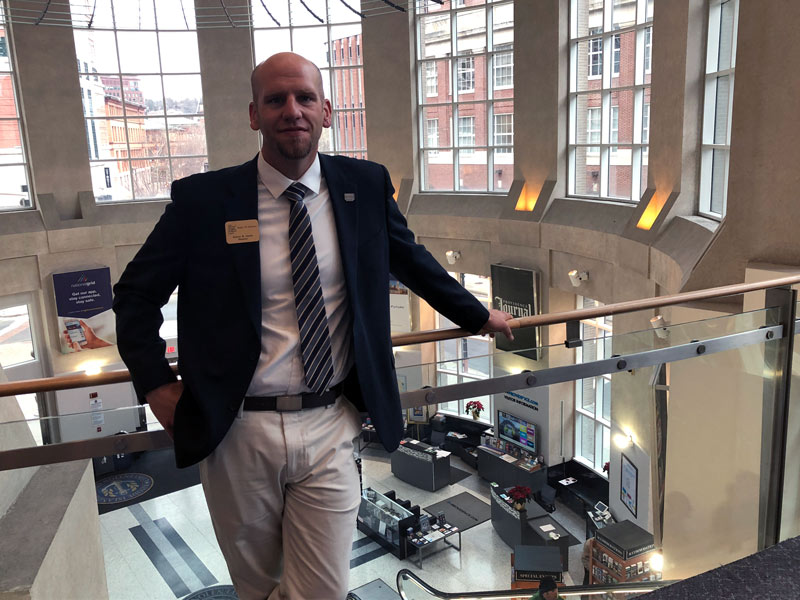
Robert Searle, the superintendent at the Abenakee Club in Biddeford Pool, Maine, is among many turfgrass managers in the state carefully watching cities’ adoption of new pesticide regulations. Photo by Scott Hollister
Maine is America’s easternmost state, a place known for its rocky coasts, out-of-this-world seafood and moose.
It’s a state whose residents share an almost universal affection for the outdoors and a sense of rugged individualism. And the golf course superintendents who ply their trade in the state are no exception, bringing deep environmental sensibilities to their work every day.
But even the most environmentally active of superintendents have been taken aback by the recent spate of municipalities in the state that have enacted bans on pesticide use on private property. These types of ordinances are not new — see most notably our friends north of the border in Canada — but the sheer number of cities in Maine to take such action and the speed at which they went from proposal to law has left Maine superintendents concerned and should serve as a cautionary tale for turfgrass managers in other parts of the country.
“Maine has a long history of environmentalism. It’s in our blood,” Robert Searle, the GCSAA Class A superintendent at the Abenakee Club in Biddeford Pool, Maine, told GCM during a break at this week’s New England Regional Turfgrass Foundation (NERTF) conference and trade show in Providence, R.I. “But this is something that is pretty extreme, pretty worrisome for our industry.”
Searle says upward of 20 municipalities throughout the state have some form of pesticide restrictions in place, including Portland, the state’s largest community. To be clear, golf has received some relief from the restrictions — these regulations are being phased in, and exemptions are available for golf courses that have achieved Audubon International Sanctuary status or are working toward it.
Still, the spread of these restrictions caught the state’s golf industry somewhat flat-footed, admits Searle, who serves in a leadership role with the Maine GCSA in addition to serving on the board of directors of the NERTF.
“We’ve really been playing catch-up for the most part on these ordinances, playing defense a lot,” he says. “We hear about potential ordinances, and then we’re going to the town meetings where it seems like the decision has already been made.”
That is changing, as the state’s golf industry — with the Maine GCSA taking the lead — has begun to take a more proactive approach. “We’re trying to shift our tactics to being more preventative, if you will,” says Searle, a 10-year GCSAA member. “We’re trying to talk to town counselors and state representatives and having these discussions before the debate begins so they have all the facts, not just what they’re hearing from activists. Just trying to get our foot in the door, so to speak.”
Searle says getting involved in the state’s political process is another avenue that holds promise for the state’s golf industry as it strives to make sure any regulations are reasonable and respect the business needs of Maine golf courses.
“Getting candidates elected that have similar values to our superintendents, perhaps even trying to get on town councils or committees is something we’re definitely interested in,” he says. “That’s where we see the future.
“We’re confident that if we’re given the opportunity to demonstrate that we respect the environment, that we’re trained, experienced land managers and that we know what we’re doing, that we’re going to be able to come up with solutions that not only protect the environment but protect superintendents and the golf industry as well.”
Scott Hollister is GCM’s editor-in-chief.